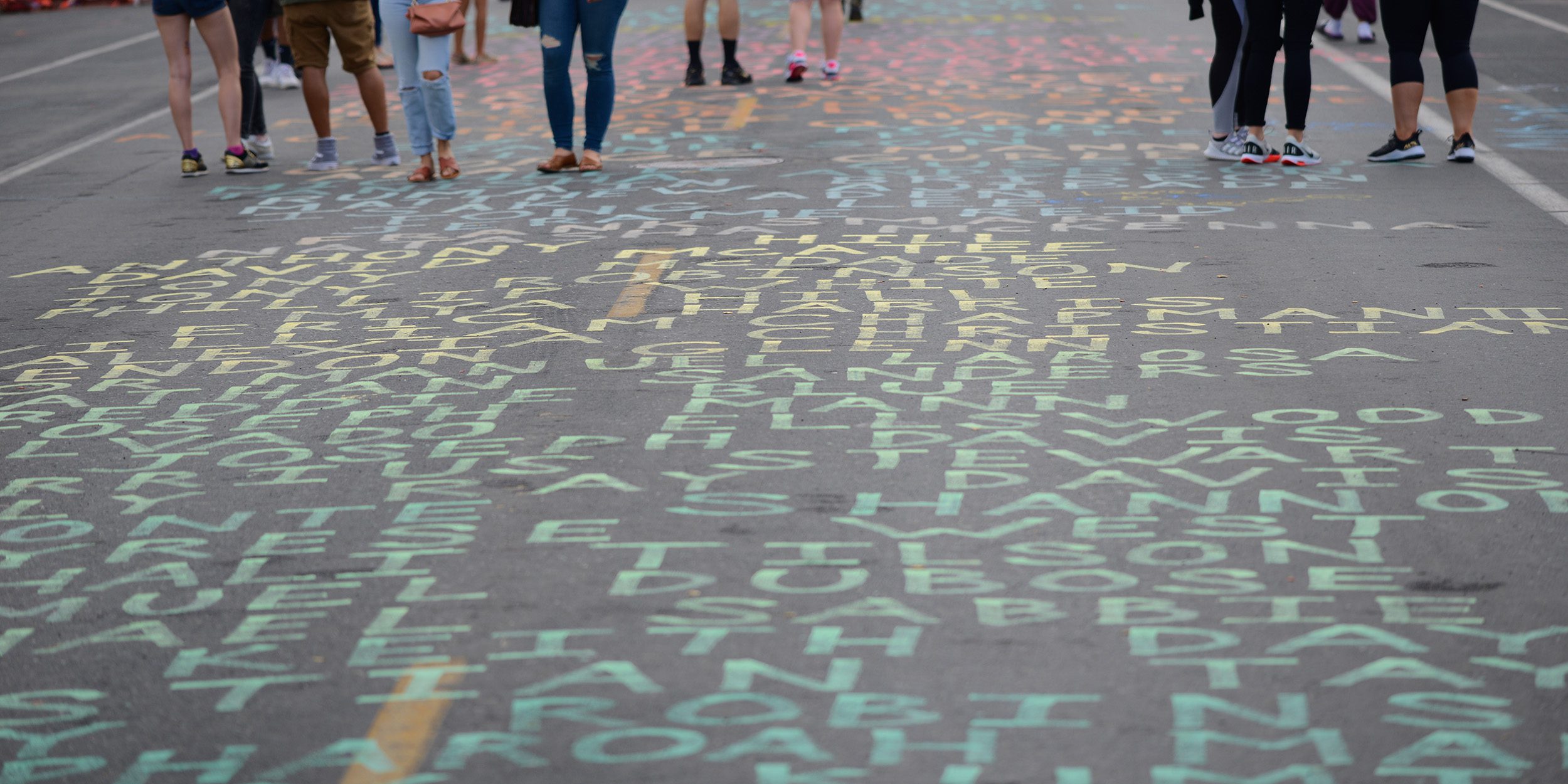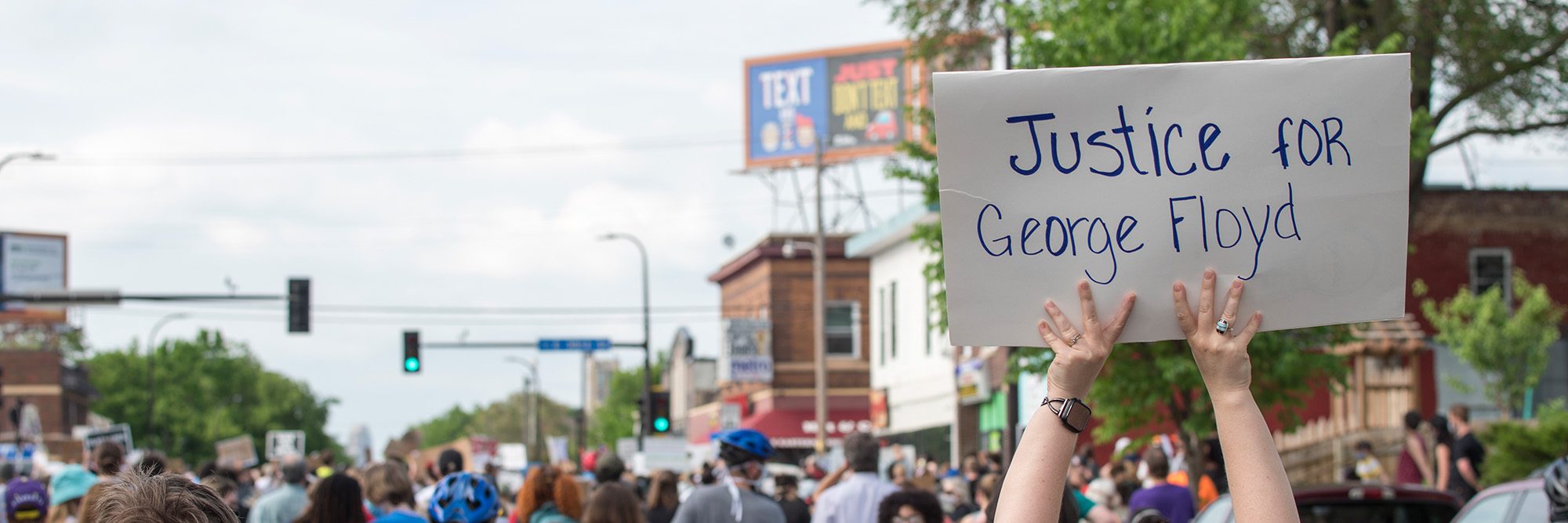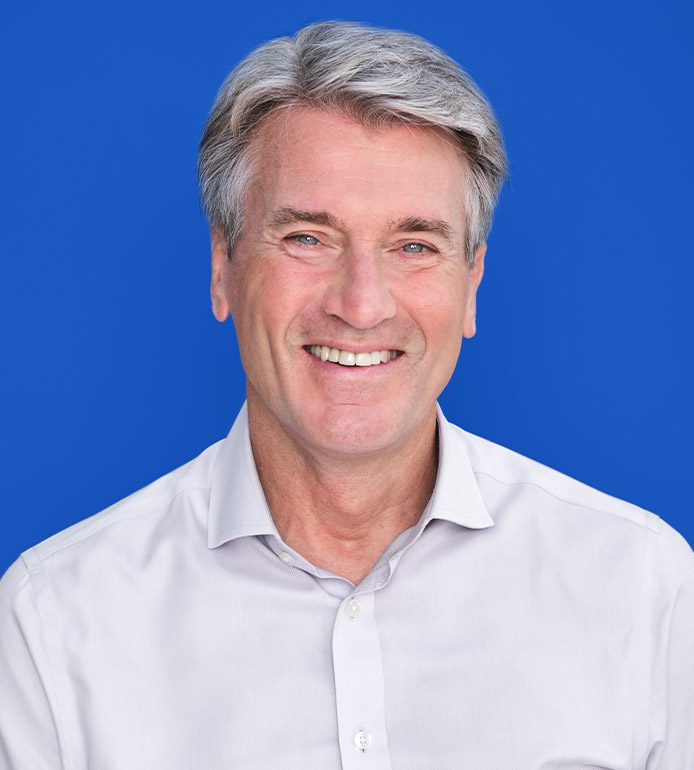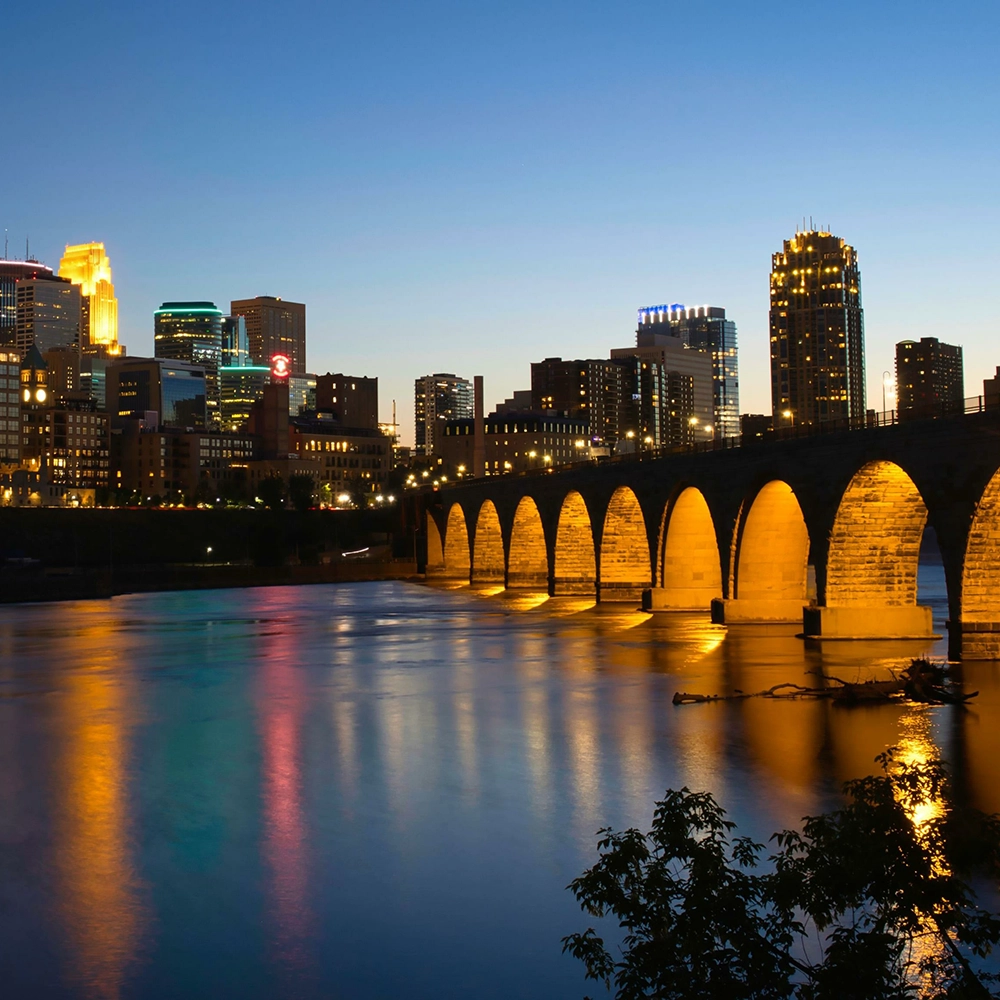Restore. Rebuild. Reimagine. And Remember.

“Where do we go from here?”
That question went through my mind as I stood on Lake Street five years ago. The scene before me was worse than anything I could have imagined—filled with smoke, broken glass, and the burned remains of buildings that once housed some of Minneapolis’s most inspiring entrepreneurs. I let myself think that wherever we’re going, it wouldn’t be good.
That feeling had been growing for days. As a former mayor and newspaper reporter, I’ve been to far too many crime scenes. But it was devastating to watch—as the whole world watched—a peace officer who worked for the people callously kneel on a man’s neck. As we all watched life drain from George Floyd’s face, something else drained from all of us.
After his murder, I wondered what the future could possibly hold for our community. The explosion of violence and destruction that followed only deepened my hopelessness.
Then, on the same street a few hours later, I saw something different.
Thousands of people—neighbors and strangers alike—showed up with brooms and garbage bags in hand. Together, they undertook what might have been the largest cleanup in the city’s history.
There was still so much reckoning to be done in the aftermath of George Floyd’s murder, including the questions around whether we have equal justice in every community. Watching that cleanup and the spirit around it, I began to believe we could come together and move toward something better.
My colleagues at the Minneapolis Foundation had the same hope. But we also knew we needed to act immediately. As we engaged with community, our work quickly aligned around a clear path: Restore what was damaged. Rebuild what was lost. And reimagine a more just future together.
Restore
It was deeply moving to see how quickly so many businesses reopened on Lake Street, as well as on Broadway Avenue in North Minneapolis and University Avenue in St. Paul. It didn’t happen by magic. In partnership with heroic neighbors, that work was carried out by a network of nonprofits that the Minneapolis Foundation and the greater community have invested in for decades.
Organizations on the ground providing immediate support included the Lake Street Council, the Powderhorn Park Neighborhood Association, Destination Northside, the Northside Funders Group, and many more. The plywood boards that went up to protect buildings soon began to serve a second purpose as canvases for murals that helped channel our collective grief.
Our community showed that even in that moment, hope can be restored when we show up for one another.
Rebuild
Driving down Lake Street today, I’m struck by how much has been rebuilt—and proud of the Minneapolis Foundation’s role in that work:
- Through a coalition of businesses, nonprofits, and individuals, we set up the Restore-Rebuild-Reimagine Fund, which provided more than $14 million to help small businesses with repairs, security upgrades, and community art.
- With our partners at LISC Twin Cities, Propel Nonprofits, and the Metropolitan Economic Development Association, we worked to distribute millions of state dollars through the Main Street program. More than $29 million has been committed to support business corridors that were hit hard in 2020. I’m especially proud of the small role we played in the four-year effort to rebuild the historic Coliseum Building, which burned about two blocks from the epicenter of the violence.
- We used our responsive OneMPLS Fund, with gifts big and small from hundreds of donors across the community, to provide rapid support to organizations that needed help rebuilding.
- With our fundholders, we made impact investments through initiatives like InvestMPLS, focusing on equitable redevelopment along Lake Street and beyond.
But rebuilding can’t just be about physical structures. Trust also needs to be rebuilt, especially with the Minneapolis Police Department. The mistrust between police and the community dates back decades, and despite multiple efforts, we are not where we need to be. Repair must be an ongoing priority for everyone.
One way we’re rebuilding trust is by listening to those who have personal experience with community violence. Guided by a committee of young adults, our Fund for Safe Communities makes grants to nonprofits that help prevent violence and promote healing in our community.
Reimagine
Restoring and rebuilding wasn’t enough. We had to reimagine a future rooted in equity and justice. In the weeks and months after George Floyd’s murder, countless ideas emerged. In fact, there were so many ideas competing for attention and funding that it was hard to get momentum for any of them.
Since then, many of those efforts have coalesced around a single initiative that has united foundations, banks, and civic leaders: The Groundbreak Coalition. Led by the McKnight Foundation, GroundBreak recognizes that reimagining trust means reimagining the economy—an economy that has too often excluded communities of color from wealth-building opportunities.
By already unlocking a billion dollars and with plans for more, GroundBreak is working to close racial wealth gaps and expand access to homeownership, entrepreneurship, and financial security.
Remember
We must rebuild. We must restore. We must reimagine. That work continues. But as another anniversary approaches, which further puts the rawness of 2020 in the past, our fourth commitment must be to remember.
Remember the issues. Policing. Public safety. Racism. But to also remember the man. The man whose name is now internationally known. Cissy’s son, to whom George cried in his final minutes and whose name is now synonymous with the lived experiences of so many.
And remember, as I do, what happened in the brief interval between George Floyd’s murder and the destruction that followed:
For a fleeting, powerful moment, tens of thousands of people from every part of our community marched peacefully together with the promise of reimagining a community where we could all experience safety, equity, and justice. That spirit—so overshadowed by the drama, destruction, and division that happened around it—is also part of our shared history and the character of Minnesotans as a people. If we can re-center ourselves in that sense of unity, then this painful chapter in our past can still help us build a better future.

If you’re looking for ways to reflect or act on this anniversary, here are a few ideas:
- Support local nonprofits. Many of the extraordinary groups that helped us through the destruction five years ago are facing significant cuts as government funding continues to shift or disappear entirely. It is more important than ever to invest in our nonprofit sector, which provides vital services to our community and economy.
- Be in community. Multiple groups are hosting events to mark this anniversary, including the Day of Remembrance and the Rise & Remember Festival.
- Invest in public safety. Rebuilding isn’t just about physical structures. We have a long way to go to rebuild trust and reimagine public safety. Many local groups are doing innovative work to prevent violence and promote healing, including our Fund for Safe Communities grantees.
—
Featured photos were originally posted to Flickr by Fibonacci Blue.


